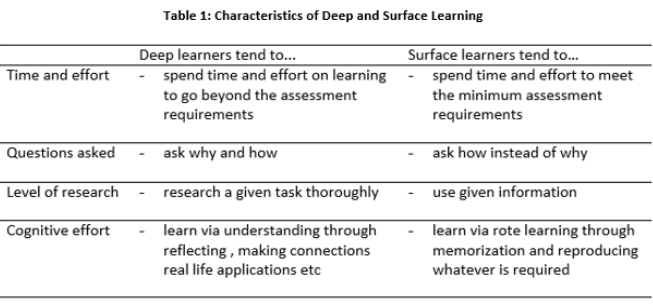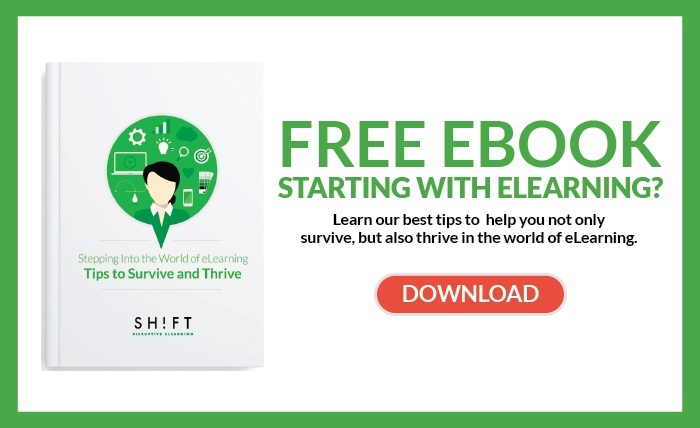What’s memorable? What leaves an indelible impression on your mind and changes you fundamentally?
We all have our favorite movies, songs, or books. There are stories, tunes, and characters that stay with us for the rest of our lives. As an eLearning developer, wouldn’t you love to design courses that create such everlasting memories for your learners? But in the core of our beings, we know how challenging it is to create unforgettable eLearning courses.
There are deadlines. Work has to be completed yesterday.
The result: you create courses mindlessly. You spend long hours working on courses that hardly resonate with your learners. So you end up wasting precious time and effort creating content that your learners forget the moment they complete the course.
Aftermath amnesia. Forgetful fog. They are real. They are as real as uneventful films, thin storylines, and trashy songs.
What can you do to stop this learning loss?
Simple. Look up from that storyboard you are creating. Turn away from the drawing board, and peek into the minds of your learners. If you can decode the science of forgetting, you can create eLearning courses that are memorable.
Forgetting Reason #1: Processing Pitfall
Solution: Turn on the reality radar! Enhance deep learning
It is terribly hard to forget something that you know will save your life. We remember traffic safety rules.
You just cannot forget something that resonates with your soul either. That’s why we remember tunes heard eons ago and phrases from books we read as kids.
In short, we remember what we regard as valuable. We remember what holds meaning for us. We evoke rich experiences that fire our imagination. And we promptly forget all that we can’t relate to. Flaky and fluffy content and information that we “have to” remember (those boring lectures on theoretical subjects) don’t make any impact on the learners.
Neurologist Judy Willis warns against the temptation to dump humongous amounts of content on unsuspecting learners in the hope that you will impress them. On the contrary, you risk alienating them. And if the learners do sit down to go through your course, the emotional or affective filters in their brains will block the impersonal content from registering.
To ensure that your courses are not forgotten, you have to create multi-sensory content that hits more than one sense and makes the learner sit up and take notice. You also have to design the course such that its relevance is apparent right away. You cannot expect your learners to keep turning (read: flicking) the pages to figure out if you have value for them.
This is how the human brain works: When stimulus hits multiple senses, resonates with a deep-seated emotion, or creates a powerful feeling, the brain perceives the object or the idea to be important. There is deep processing that results in powerful memories being created.
Here are some ideas on how you can include deep learning moments in your eLearning courses:
- Create a Need and Provide Solutions. Your adult learners are goal-oriented people who can’t be wooed with fluff. You have to make sure that learners perceive the “need” to take your course. Make it clear to them that your course is all about helping them do better at their jobs by teaching them a new skill, refreshing old ones, and/or enlightening them on the latest trends and best practices. Create titles and subtitles and use images that resonate with meaning.
- Connect the Course With Life. We are all flattered when someone shows an interest in us. Right? Flatter your learners and make them interested in what you have to say by showing interest in the goings-on in their lives. The real insights are out there; talk to your audience and peek into their daily lives to find out what challenges them at the workplace. Then craft real-life scenarios that reflect their reality and provide the much-needed context that begets attention. Read: 5 Rules for Creating Relevant and Fluff-free Courses
- Provide Examples. The best teachers teach using examples. Make sure that the meaning isn't lost in translation by using examples your learners are familiar with, and in a language they understand. Read: 6 Ways to Incorporate Examples into Your eLearning Courses
- Keep it Challenging. Go beyond Rote Learning. When the mind is stimulated, it pays attention. Stir the mind by creating challenging activities—scenarios or questions with multiple solutions—instead of rote learning that lulls the mind and drowns the senses in a stupor. (Check this post for more ideas on creating challenging, grey cell-tickling content.) Create content that facilitates greater understanding of the subject matter; this will help learners crack the problems. This, in turn, makes for deeper processing and easy remembrance.
- Create Opportunities for Reflection. Don’t let your painstakingly-crafted content fall flat on its face and not make a dent on the learners. Create opportunities for learners to ponder the content and apply the newly-acquired knowledge. Reflection moves information from the short- to the long-term memory space. Activities like short quizzes in between modules encourage reflection. Also, keep aside time for group discussions, question hours for the instructor, and journaling to help learners clarify doubts, clear misconceptions, and acquire a deep understanding of the subject.
- Impactful images. Powerful images move us deeply. And more so, if we can relate to them. Use images that depict familiarity and hold relevance for your learners—workplace situations that they often find themselves in and characters they are likely to come across and interact with at work and/or in their daily lives. When your learners “see themselves” in your course, they are more interested and perceive relevance right away. Here's a guide for using images in eLearning.
- Refer to activate earlier knowledge. It is easy to wrap your wits around new information if you can relate it to prior knowledge or experience. Think about it. When we were kids, we first learned about mammals. Then our teachers told us that horses, cats, and dogs are mammals. This saved us the trouble of memorizing and making sense of the information about horses, cats, and dogs separately.
As an eLearning designer, your goal is to create opportunities for deep learning that stirs the mind vis-à-vis shallow learning that is soon forgotten.
Deep learning enables learners to dive really deep into a subject and gain an understanding that transcends the mere job of making past assessments.
Deep learning facilitates mastery of a subject matter whereby learners go beyond just being able to answer the how. With the knowledge gained, they can connect the dots, discern underlying patterns, and solve real-life problems. On the other hand, shallow learning thwarts any attempt at reflection, so learners can only regurgitate what they have memorized.
This table adapted from Hamm and Robertson (2010) explains the difference between deep learning and shallow learning lucidly:

Wait! We are not finished yet. We have more solutions and tips up our sleeves to help you create memorable courses. Watch this space for the second post on how to decode the science of forgetting.
Additional read: These Are The Reasons Why Learners Forget Your Training
REFERENCES:
CONTENT CURATION AS A METHODOLOGY FOR DEEP LEARNING
The Science of Creating Memorable Content: https://www.intelligentcontentconference.com/science-creating-memorable-content/
The Seven Rs: Learning Beyond Content https://wsascd.org/wp-content/uploads/09-Gaytley-Article.pdf



